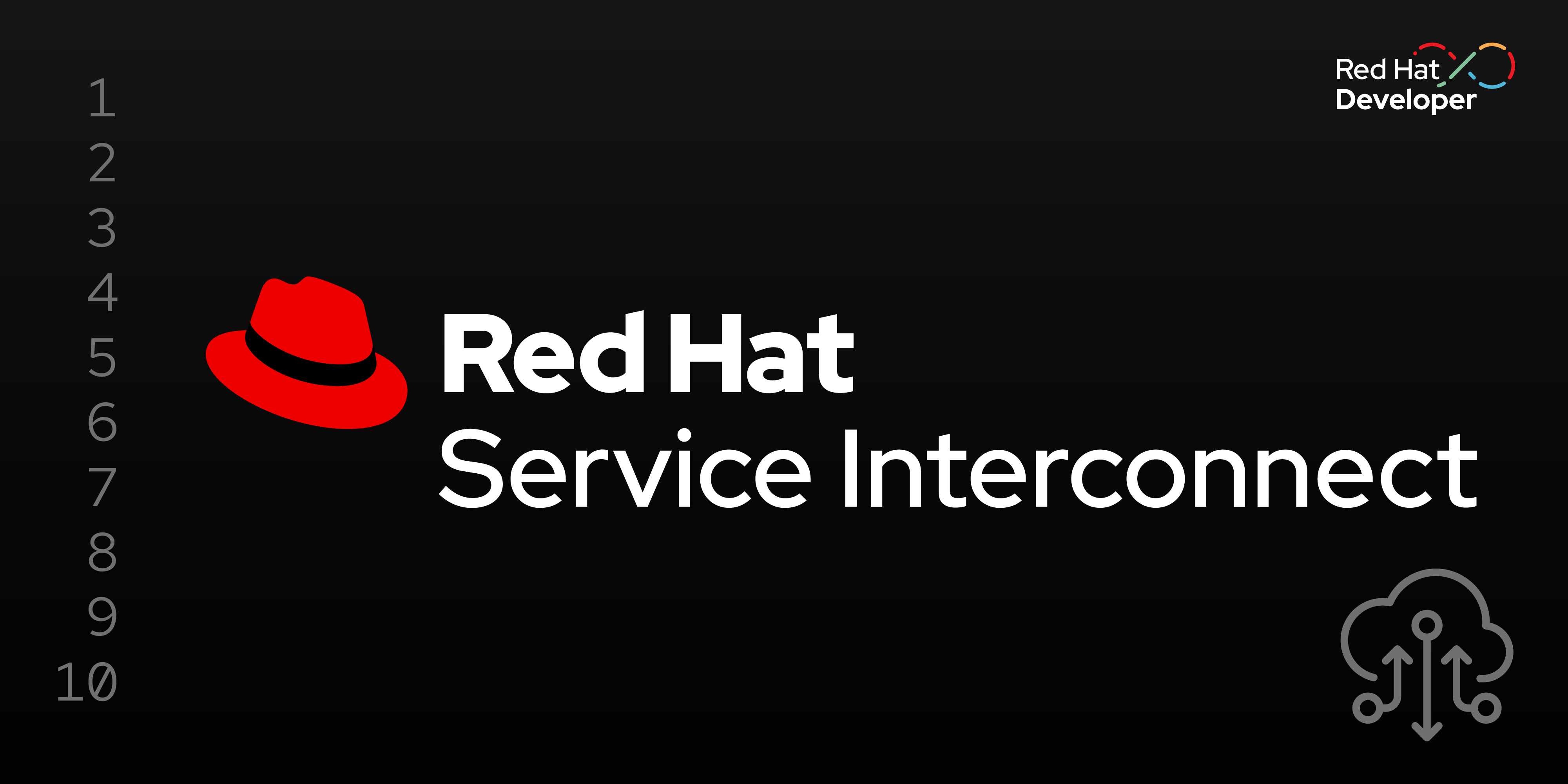Page
Initialize the gateway

What will I need to complete this activity?
- You will use the Developer Sandbox and your local laptop to deploy the front end and the database, respectively.
- Podman or Docker installed on your local machine.
- A no-cost Developer Sandbox account; follow these instructions to set up your sandbox if you haven't already done so.
- OpenShift command-line interface (CLI) installed on your local machine.
If you need help
If you get stuck, something isn’t working, or you simply have questions, contact us via email at devsandbox@redhat.com.
Initialize the gateway
Now that you have set up your service network, it's time to initialize the gateway.
If you’re using Docker on a Mac, create a file with the name simple_docker.yaml and paste the following into it:
name: simple
qdr-listeners:
- name: amqp
host: localhost
port: 5672
bindings:
- name: database
host: host.docker.internal
service:
address: database:5432
protocol: tcp
ports:
- 5432
target_ports:
- 5432Initialize the Docker gateway:
skupper gateway init --config simple_docker.yaml --type dockerIf you’re using Podman on RHEL, create a file with the name simple_podman.yaml and paste the following into it:
name: simple
qdr-listeners:
- name: amqp
host: localhost
port: 5672
bindings:
- name: database
host: localhost
service:
address: database:5432
protocol: tcp
ports:
- 5432
target_ports:
- 5432Initialize the Podman gateway:
skupper gateway init --config simple_podman.yaml --type podmanYou should see an output similar to the one below:
Skupper gateway: 'username-mac-username'. Use 'skupper gateway status' to get more information.Your local computer should now appear in the console, as shown in Figure 6.

Though you have linked both the cluster and your local environment, you have not exposed any services yet. By default, none of the services are exposed by Red Hat Service Interconnect, so you have to explicitly mention which services you want to expose over the service network.
Verify your services by going back to the console. Click on the Components tab (Figure 7). You should now see the Patient Portal Front end (patient-portal-frontend) process from your namespace (your site on OpenShift) as well as the gateway process running on your local machine (the “Private Datacenter”).

By going to the Processes tab in the Topology section, you can see the current state of processes in our topology, including the site information (Figure 8).

Expose the database service
Now expose the database service over the service network. This will allow the front end on the public cluster to connect to the database as if it was a local service. In reality, the OpenShift service is a proxy for the real service running on your computer;
Expose the database over the service network:
skupper expose service database --address database --port 5432 --protocol tcpYou should see an output similar to the one below:
service database exposed as databaseYou have now established a secure link between the sites and exposed the database as a service on your OpenShift cluster (Figure 9).

In the Processes tab, you can even see more detailed information about the established service connectivity (Figure 10).
Note: If you don’t see the connecting arrows in the Components or Processes view right away, skip ahead to refreshing the Patient Portal front end in your browser (issuing some traffic over the connection) or wait a few moments.

Note: We are not exposing the database and payment processor service to the internet; only the services that are part of the service network enabled by Red Hat Service Interconnect can access them.
Get a list of services deployed in the sandbox namespace:
oc get serviceYou should see an output similar to the one below:
NAME TYPE CLUSTER-IP EXTERNAL-IP PORT(S) AGE
database ClusterIP 172.30.208.188 <none> 5432/TCP 8m55s
modelmesh-serving ClusterIP None <none> 8033/TCP,8008/TCP,8443/TCP,2112/TCP 7d3h
patient-portal-frontend ClusterIP 172.30.144.46 <none> 8080/TCP 77m
skupper ClusterIP 172.30.54.88 <none> 8010/TCP,8080/TCP,8081/TCP 47m
skupper-router ClusterIP 172.30.102.71 <none> 55671/TCP,45671/TCP 47m
skupper-router-local ClusterIP 172.30.75.28 <none> 5671/TCP 47mThe database service is the proxy service created by exposing the database deployment on your local environment over the service network. After a few seconds, go back to the browser tab where you opened the patient portal front end and refresh it (Figure 11). You should now be able to see the list of patients and doctors that you have retrieved from the database. This indicates that you have successfully connected your front end to the database using Red Hat Service Interconnect.

Note: Wait a few moments for the patient data to show up. If the patient data doesn't appear after establishing the connection and refreshing the front end, try restarting the front-end pod.
oc delete pods -l deployment=patient-portal-frontendMetrics
You can open a detailed view of the processes by clicking on them in the Processes view or listing them from the side menu (Figure 12). That's where you can view the metrics of established connections in your service network:

Conclusion
Congratulations! You built a secure service network between services on two different environments and allowed applications to connect and communicate over the secure network using Red Hat Service Interconnect. To learn more, visit our Red Hat Service Interconnect product page.
